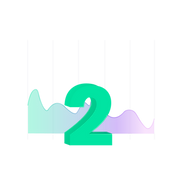
FORGE DEVELOPER PORTAL
Enhancing the Developer Experience in Application Programming Interface (API) usage
Notes:
- This was a summer internship project @Autodesk
- Some information may be withheld due to NDA
WHAT I DID
My role: UX Researcher
Existing research synthesis
Market research
In-depth user interviews
Data analysis & visualization
Usability tests
TOOLS USED
Zoom
Mural.co
Figma
AirTable
Tableau
STAKEHOLDERS
Project Managers
Experience Design (XD) Manager
Sr XD Researcher I
Sr XD Researcher II
Sr Software Architect
Sr Product Owner
Experience Design Researcher (me)
DURATION
May to August 2021
BACKGROUND
Existing Autodesk research findings showed that:
1) App Creation was amongst the main user journeys on the platform
2) Future KPI included increasing cohesion and usability of API Documentation
3) APIs were not used alone, but the portal lacked guidance on using APIs in combination
PROBLEM
The current API display and interactions were unclear to users on how they can be used together. They failed to clearly lay out the maximized value proposition of API's when combined together.
USER POPULATION
Internal Autodesk engineers, developers, and software architects
External Autodesk clients in engineering, construction, and/or manufacturing industries
PROJECT GOAL
How can we deeply understand the hidden relationships between Forge APIs and effectively display them on the Developer Portal?
APPROACH

MARKET ANALYSIS

USER INTERVIEWS

DATA ANALYSIS

USABILITY TESTS
1. MARKET ANALYSIS
I drilled down into the fine user experience details from in-demand developer portals, that are, AWS, Google, Stripe, and Auth0. I mapped out 22 total screens and highlighted 59 vital UX features in a side by side comparison flowchart.
I then held a workshop to present and analyze these findings with my stakeholders. My stakeholders voted for 12 features that they believed could be the most impactful for Forge. Then, using a variation of the importance-difficulty matrix, I analyzed and collaborated with a Senior Experience Designer to identify 2 features to test in a prototype.
The market analysis and workshop method helped me and my stakeholders to identify novel features, common themes, and better understand our users' expectations and experiences on these popular platforms.
I found that...
The current experience lacks:
•API and Services groupings
•Sandbox feature
•Code samples in multiple languages
•Code samples integrated into Documentation page
•Master Documentation page to house high-level Documentation information in one page
2. SEMI STRUCTURED USER INTERVIEWS
I conducted a total of 6 user interviews; I interviewed 3 internal experts and 3 external customers in 1 hr sessions each. I used this method to identify pain points and human experience that I could not get out of a market analysis, as well as validate past findings.
I found that...
Users expressed needs and wants for:
API and Services Groupings or other guided formats
A sandbox feature
A documentation master page
3. 'ACCELERATOR' DEMO DATA ANALYSIS
I leveraged the Forge accelerator demo data with the help of my mentor and an Accelerator team member. From over 231 demo projects, I was able to identify patterns & trends of common APIs combinations used to create these different applications. This helped me validate against the card sort groupings to produce core API groupings.
I found...
Common trends and groupings in APIs used to create specific applications; these could be drilled down to industry, function, and more.
4. USABILITY TESTS
I designed a clickable, interactive prototype and validated this with a Senior User Experience Designer. I then recruited participants and tested it with 5 users to get their feedback on the API groupings and layout.
This helped me understand the users' perception and experience with the design concepts. It helped validate assumptions while revealing unexpected or novel issues with the user experience.
I found that...
Users were excited about powerful sorting functionality but have mixed feelings for API groupings
Users really want and need sample code
RECOMMENDED
SOLUTIONS
From the entirety of the research efforts, these recommendations were established to enhance the user experience and fill existing UX gaps:
• Show API groupings to guide newer Forge developers
• Provide sandbox feature for users to try APIs without having to write extensive code
• Group APIs together based on their functions and workflows
• Leverage ML/AI to provide personalized API-related recommendations
• Include extensive collection of past projects in one hub with sorting functionality
• Include sample code in each statement of documentation and / or for each API
• More research needs to be done to understand complex and diverse user needs
IMPACT
In addition to influencing design changes to the portal and impacting thousands or developer users, this effort created added research opportunities for Autodesk to further explore in order to transform their users' future product experience.
After discussions with my stakeholders, these are all the action items moving forward from this research project.





















